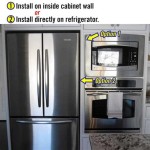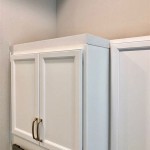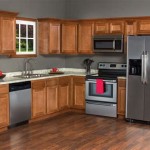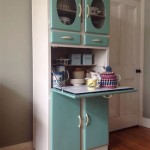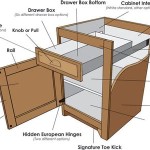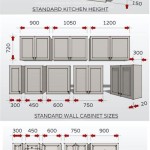Kitchen Drawer Organizer Ideas: Maximizing Space and Efficiency
The kitchen, often considered the heart of the home, is a hub of activity. Its efficiency is directly related to its organization. Drawers, in particular, can quickly become cluttered catch-alls, hindering workflow and making it difficult to find essential tools. Effective kitchen drawer organization is paramount for a functional and enjoyable cooking and meal preparation experience. This article explores various kitchen drawer organizer ideas, focusing on maximizing space, improving accessibility, and enhancing the overall aesthetic of your kitchen.
Before embarking on an organizational overhaul, it’s crucial to assess the specific needs of the kitchen. Consider the types of items stored, the frequency of use, and the existing drawer dimensions. A thorough inventory will lay the groundwork for selecting the most appropriate and effective drawer organizers.
Understanding Drawer Types and Functionality
Kitchens typically feature a variety of drawer types, each designed for specific purposes. Deep drawers are ideal for bulky items like pots and pans, while shallower drawers are better suited for utensils, cutlery, and smaller tools. Wide drawers offer ample space for dishes or food storage containers, whereas narrow drawers can accommodate spice racks or utensil organizers. Understanding the limitations and potential of each drawer is the first step toward effective organization.
Furthermore, consider the internal dimensions of the drawers. Take accurate measurements of the width, depth, and height to ensure that any purchased organizers will fit properly. It's also beneficial to note the drawer construction, as some drawers may have built-in features or obstructions that need to be considered when selecting organizers.
The functionality of each drawer should also dictate the type of organizers used. Drawers near the stove might be best suited for cooking utensils, while drawers near the sink could be designated for dish towels and cleaning supplies. Strategic placement of frequently used items within easy reach will significantly improve kitchen efficiency.
Exploring a Variety of Organizer Options
The market offers a wide array of kitchen drawer organizers, each designed for specific items and organizational styles. The best choice depends on individual needs, drawer sizes, and aesthetic preferences. Options range from simple dividers to elaborate modular systems, each offering unique benefits.
Adjustable Drawer Dividers: These versatile dividers are ideal for creating custom compartments within drawers. They typically feature spring-loaded mechanisms or adjustable clips that allow users to easily reconfigure the layout as needed. Adjustable dividers are particularly useful for organizing utensils, cutlery, and cooking tools, preventing them from sliding around and becoming tangled.
Cutlery Trays: These trays are specifically designed to organize silverware and serving utensils. They are typically constructed from wood, plastic, or metal and feature individual compartments for each type of utensil. Cutlery trays help to keep silverware neatly organized and easily accessible.
Spice Rack Inserts: Spice racks inserts are designed to neatly organize spice jars, preventing them from cluttering counter tops or cabinets. They often feature tiered shelves or angled slots that allow users to easily view and access their spices. Spice rack inserts are available in a variety of sizes and materials to fit different drawer dimensions and aesthetic preferences.
Knife Blocks: While traditionally placed on countertops, knife blocks can also be incorporated into drawers for a sleek and space-saving solution. In-drawer knife blocks typically feature angled slots that securely hold knives of various sizes, protecting their blades and preventing accidental cuts.
Pot and Pan Organizers: Deep drawers are often used to store pots and pans, but these items can quickly become disorganized and difficult to access. Pot and pan organizers typically consist of dividers or tiered shelves that allow users to neatly stack and separate their cookware. Some organizers also feature adjustable dividers that can be customized to accommodate different pot and pan sizes.
Container Lid Organizers: Food storage containers are essential for storing leftovers, but their lids can often become a source of clutter. Container lid organizers typically feature vertical slots or compartments that allow users to neatly store and separate container lids, preventing them from getting lost or damaged.
Pegboard Systems: Pegboard systems offer a highly customizable and adaptable solution for organizing kitchen drawers. They consist of a pegboard insert and a variety of pegs, cups, and dividers that can be arranged to create a custom storage solution. Pegboard systems are particularly useful for organizing irregularly shaped items or items that require frequent rearrangement.
Beyond these commonly used organizers, other options exist, including roll-out shelves, custom cabinetry inserts, and magnetic knife strips for inside the drawer. The selection process should consider both functionality and the aesthetic of the kitchen.
Implementing an Effective Organizational Strategy
Choosing the right organizers is only the first step. A successful organizational strategy requires a systematic approach that considers space optimization, workflow enhancement, and maintainability. This involves decluttering, strategic placement, and establishing consistent organizational habits.
Decluttering: Before implementing any organizational system, it's crucial to declutter the drawers. Remove all items and assess their necessity. Discard expired items, duplicates, or tools that are rarely used. This process frees up valuable space and simplifies the organization process. It also avoids the pitfall of organizing items that are unnecessary and contribute to clutter.
Strategic Placement: Organize items based on frequency of use and proximity to related tasks. Place frequently used utensils and tools within easy reach of the stove or countertop. Store less frequently used items in drawers that are less accessible. Also, grouping similar items together, such as grouping baking utensils together or keeping cookware near the stove, allows for a more functional and efficient kitchen layout.
Utilizing Vertical Space: Maximize the utilization of vertical space within the drawers. Use tiered organizers or stacking systems to create multiple levels of storage. This allows for efficient use of the available space and prevents items from being buried at the bottom of the drawer.
Customization: Consider customizing organizers to fit specific needs. Adjustable dividers or modular systems allow for flexibility and adaptability as storage needs change over time. Customizing organizers ensures a perfect fit and optimal utilization of the available space.
Labeling: Labeling drawers can be especially helpful in maintaining an organized kitchen. Clear labels indicate the contents of each drawer, making it easy for anyone to find what they need. This is particularly useful in shared kitchens or for drawers that contain a variety of different items. It reinforces the organizational system and minimizes the likelihood of items being misplaced.
Maintenance: Maintaining an organized kitchen drawer system requires consistent effort. Regularly decluttering and rearranging items ensures that the system remains efficient and effective. Periodically cleaning the drawers and organizers prevents the buildup of dust and debris. Consistent maintenance is key to preventing the recurrence of clutter and ensuring a long-lasting organizational solution.
Choosing drawer organizers that complement the kitchen's overall design can further enhance its aesthetic appeal. Wooden organizers can add warmth and character, while stainless steel organizers offer a sleek and modern look. Clear acrylic organizers provide a minimalist aesthetic and allow for easy viewing of the contents. Consider the kitchen's existing décor and choose organizers that enhance its visual appeal.
Ultimately, successful kitchen drawer organization is a dynamic process that involves careful planning, thoughtful selection of organizers, and consistent maintenance. By implementing these strategies, homeowners can transform chaotic drawers into efficient and functional storage spaces, enhancing the overall kitchen experience.
This article has explored the various facets of kitchen drawer organization, providing insights into drawer types, organizer options, and strategic implementation. The goal is to provide homeowners with the knowledge and tools necessary to create a more organized and efficient kitchen space.

20 Space Saving Kitchen Drawer Organization Ideas A Cultivated Nest

Impeccably Organized Diy Drawer Dividers Diydrawerdividersimpeccably Kitchen Design Organization

Make Your Own Custom Drawer Organizer Diy Kitchen

Top Small Kitchen Drawer Organization Tips Living Well Mom

Diy Drawer Organizer Fixthisbuildthat

8 Easy Diy Kitchen Drawer Organizer Ideas

How We Organized Our Kitchen Drawers And Cabinets Jenna Sue Design
:strip_icc()/101901092-6e0e35e925974ffbb00a8e46d546f925.jpg?strip=all)
25 Clever Cabinet And Drawer Storage Ideas For Your Home

12 Best Kitchen Drawer Organization Ideas Small

15 Kitchen Drawer Organizers For A Clean And Clutter Free Décor

